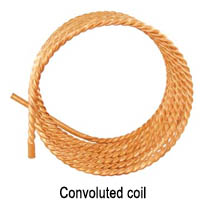Here is the start of yet another thread on a clone of Kals amazing setup. First off I would like to say that Kal did an amazing job. We can debate his choice of materials all day long, but that really isnt the point. He did it one way and it turned out amazing. We are going to do it a slightly different way due to our limited monetary resources and we expect to produce something amazing as well.
We knew we wanted to build a tree type setup to reduce the foot print of the set. We also wanted it on wheels so that we could move it around as need. I started off by welding up a frame out of metal that was given to me when purchasing some other stuff off CL. Here is a picture of what it looked like when I was getting started.

Here is a picture of the stand it its somewhat final layout. I did end up moving the BV up about 4 inches so that we didnt have to worry about priming the wort pump.

We are using copper for our HERMS coil. We found that bending the tube around a 10 inch OD stove pipe made the job very easy. We had the entire 50 wrapped up nicely in about 10 minutes.

At this point we have received a few of our parts orders. I will update the thread with details on them shortly.
We knew we wanted to build a tree type setup to reduce the foot print of the set. We also wanted it on wheels so that we could move it around as need. I started off by welding up a frame out of metal that was given to me when purchasing some other stuff off CL. Here is a picture of what it looked like when I was getting started.

Here is a picture of the stand it its somewhat final layout. I did end up moving the BV up about 4 inches so that we didnt have to worry about priming the wort pump.

We are using copper for our HERMS coil. We found that bending the tube around a 10 inch OD stove pipe made the job very easy. We had the entire 50 wrapped up nicely in about 10 minutes.

At this point we have received a few of our parts orders. I will update the thread with details on them shortly.






















